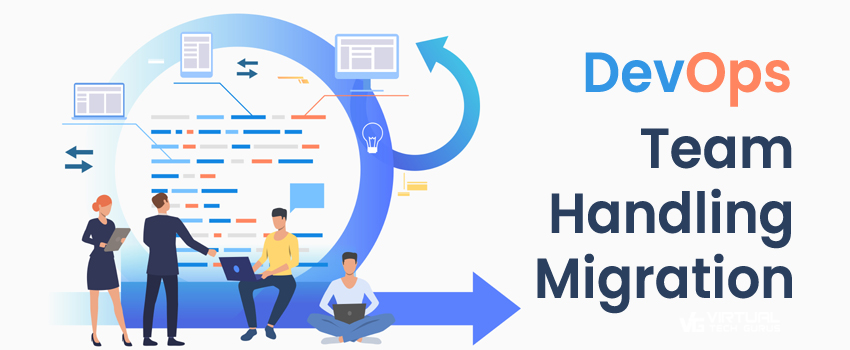
DevOps Team-Handling Migration
The adoption of DevOps may be driven by factors such as Agile development methodology, wide choice of public and private cloud platforms, and a wide range of tools for data center automation and configuration management. But companies adopt DevOps differently, integrating the people, tools and processes to meet each organization’s unique goals.
While companies with 250 to 1,000 employees can better integrate a DevOps process, businesses with more than 1,000 employees may well have the scale needed to embrace and leverage a DevOps strategy.
Whatever be the size of the organization, it requires hiring developers who are familiar with DevOps cycles and workflows, organizing an IT staff capable of accommodating dynamic release schedules, implementing a suite of tools that facilitate collaboration between developers and IT, and applying clear business leadership that can drive DevOps adoption.
DevOps Team Help to Migrate
The knowledge of DevOps teams in terms of an organization’s new and legacy apps, can streamline an application’s move to the cloud. While a DevOps model that defines an end goal, requires more work, it can certainly move across, a variety of infrastructure and application components, making it more cloud-suitable.
Members of a DevOps team who are experts on cloud computing and configuring services in the cloud, will know how to handle large-scale analytics and non-relational databases.
Migrating to a cloud provider also means you will need to install and manage a significant amount of services, cloud providers give you out of the box. Managing these systems becomes a bit of an unmanageable operational task as there will be a constant need to update configurations and add new components to keep with the ever changing application needs. Configuration automation frameworks like Chef and Puppet help mitigate this problem.
- Chef is an imperative DevOps framework that produces “cookbooks” based on Ruby, made with creative developers in mind and representing the Dev side of DevOps. It can integrate with cloud-based platforms such as Amazon EC2, Google Cloud Platform, OpenStack, IBM SoftLayer, Microsoft Azure and Rackspace to automatically provision and configure new machines
- Puppet is a model-based or declarative approach, catering to system admins. Puppet is based on JSON data models. Because Puppet is non-procedural, it bridges DevOps’ scripting form and model form
As their role is being established, DevOps workers learn more about cloud computing than any other IT staff member. DevOps team members know the ins and outs of traditional file systems, distributed file systems and object stores, such as Amazon S3 (Simple Storage Service). Hence they must be able to help you migrate existing application logic to services that scale and run entirely in the cloud.
Also, DevOps teams knows how to configure applications for newly developed software, and how to interface with legacy systems. Naturally, this makes them dexterous at facilitating the migration of legacy software to the cloud.
DevOps Strategy & Planning for long term
Implementing a DevOps strategy is not a one-time effort. DevOps aims to maximize the predictability, efficiency, security, and maintainability of operational processes and very often, automation supports this objective. But just like the practice of Kaizen, DevOps must instill continuous improvement in all functions of the business. Organizations must also constantly adjust strategies to deal with business changes, technological advancements and evolving user expectations.
There are MSPs with experiences in cloud development and integration technologies, (having a team of skilled people, processes and tools) who provides DevOps as a managed service to businesses who runs or wants to run applications in the cloud. They work closely together with their client’s developers and in-house architects to help guide them to successfully leverage the benefits of the cloud and ensure that their environment runs efficiently and effectively with less downtime and faster deployment.
Deploying quickly and reliably requires automation tailored to a businesses’ unique workflow and MSP DevOps engineers ensures this by streamlining the path from idea till launch for their client’s application developers. This enables the businesses to focus on what they do best, running their business without fear of failing systems.
Check out our articles and infographics.
